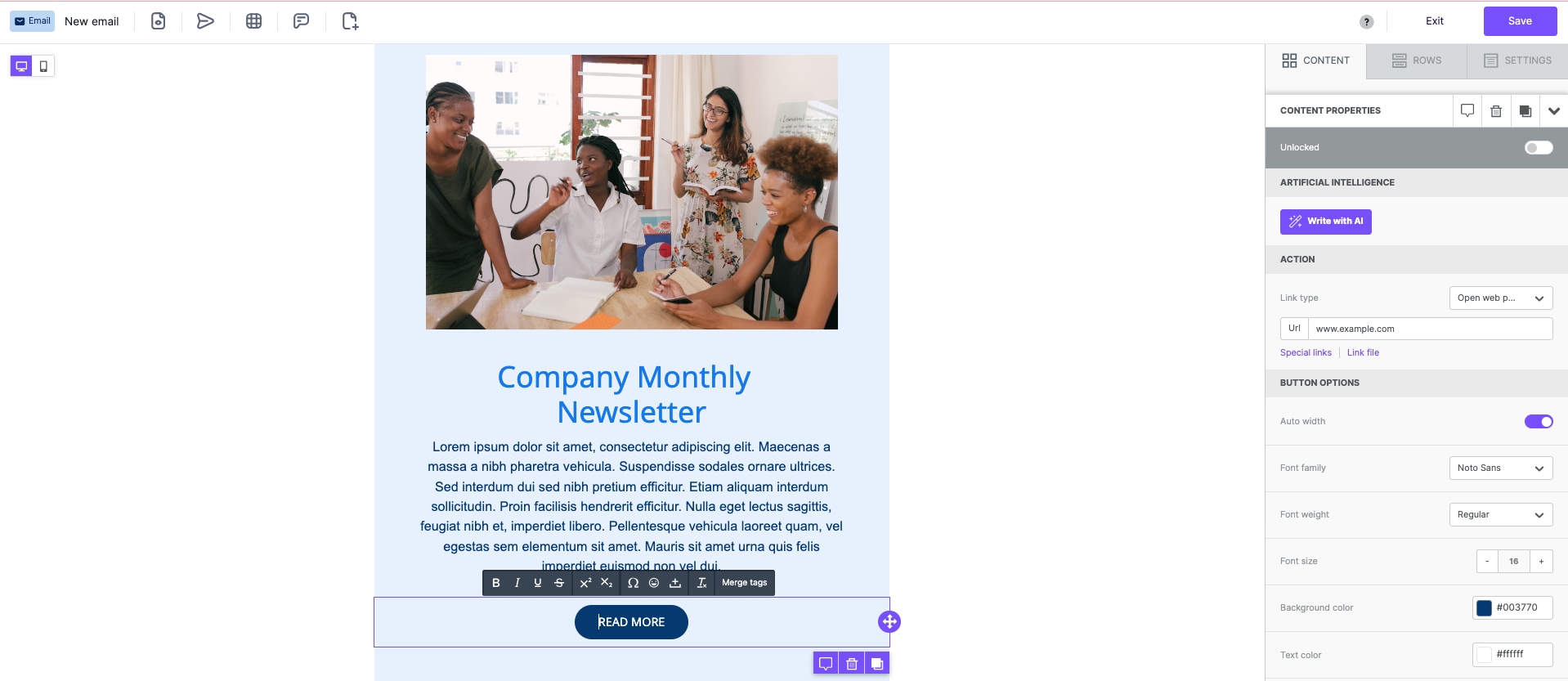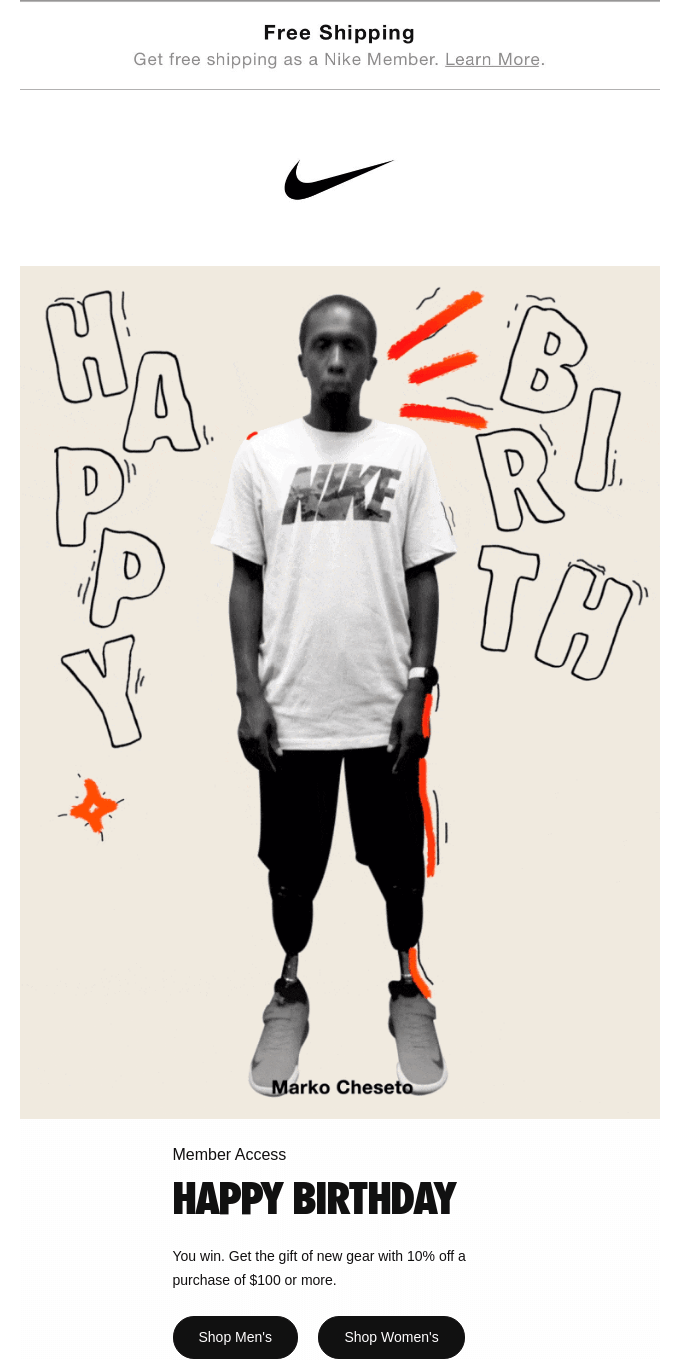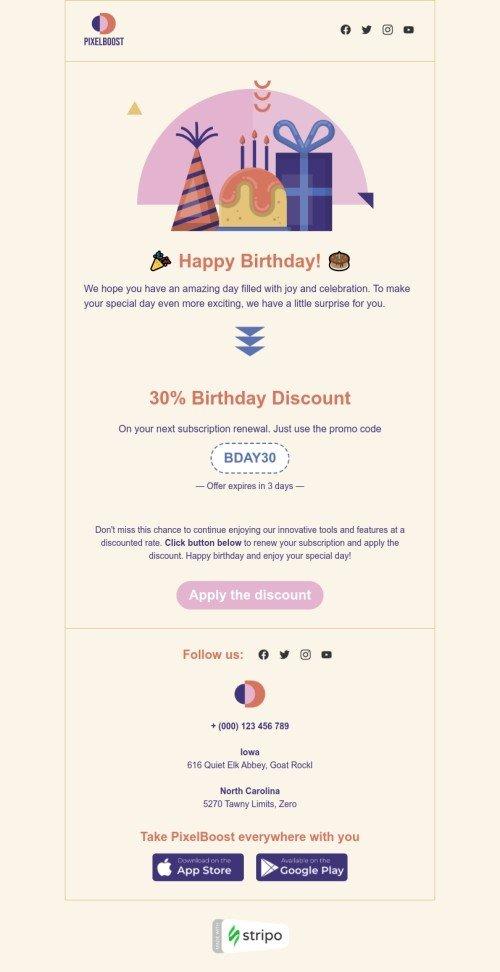Designing a landing page is a lot like putting a house up for sale. You stage the place, take eye-catching pictures, and list it in hopes of achieving one goal: Selling the house.In the same way, a well-designed landing page gets you to a focused goal: Getting your customer to click on the CTA. Just as you would stage your house for the big sale, you have to make sure your landing page is designed with elements that will entice readers and lead them to click.You don’t need expert-level design skills to achieve a high-converting landing page. Narrowing in on the quality of your content and landing page design elements is a sure way to attain those big results.Are you helping your target audience and meeting their needs? Are you intriguing your customer base to the point of conversion? Think about these questions as you follow along with this step-by-step guide to start designing landing pages that convert.
Know when to use a landing page
Before we go any further, let’s pinpoint if a landing page is the right asset for your goals. Identify what type of page you want to use before you begin designing. Do you need a website or a landing page to achieve your goals?Use a landing page when:
- You have one focused goal to achieve
- There are few distractions and one CTA (Call-to-action: The action you want your customers to take)
- You need to include sign up forms, lead initiating content, sale promotions
Use a website when:
- You want to explain multiple goals and provide in-depth details
- There are plenty of info regarding different goals and multiple CTAs
- You need to build brand awareness and teach customers about your product
Now that we confirmed we need a landing page, you’re ready to jump into the design steps.

How to build a landing page in 10 easy steps
Landing pages are supportive tools for your business. They work to achieve results like building your email list or driving purchases. Building a landing page requires you to identify the purpose of the page and then implement design elements that align with that purpose. Now let’s get into the nitty-gritty of the design process.
Decide on a campaign goal
By definition, landing pages have one focused goal. Before designing your landing page, determine what your goal will be. Is your landing page going to:
- Drive sales? Display a specific product where the CTA leads straight to the shopping cart.
- Boost conversions? Have a clear path to conversion that builds brand awareness.
- Generate Leads? Grow faster by offering a product demo, free downloadable resource or sign up form.
Once you’ve decided on your campaign-specific goal, choose the template layout that fully supports your goal.
Plan your landing page layout
Your layout is what guides subscribers to achieve the goal of your landing page. The perfect landing page will have a visual hierarchy and includes a headline, your offering, an explanation of the benefits, visuals, a CTA and lead-capture forms.The visual hierarchy of your landing page content will do some of the legwork for you. It creates a natural, easy-to-read pattern for subscribers, which clarifies what action you would like them to take. The F-pattern or Z-pattern layout is recommended for a smooth read.


Also, always remember to prioritize content above the fold. This means that the most important content will be visible instantly upon opening the landing page. Important information and your CTA need to be front and center before you dive into more details.This technique is like a first impression, it gives visitors a quick look at what you have to offer before they scroll, which helps increase conversions faster. It’s also a way to be respectful of a visitor's time.
Write your concise copy
The copy is the driving force of your landing page. It’s how you entice visitors with your offer and communicate the benefits of why your product or service is worthwhile. When writing copy make sure to:
- Develop a clear headline. State your offer and how it will benefit your visitors. Keep this short and concise.
- Bring it back to the customer. Simply stating all the highlights of your product/service doesn’t help your visitor. Share the benefits, details and how this is going to help visitors in the short and long term.
- Don’t get too technical. Cut the technical jargon and make it simple for visitors to understand what you have to offer.
Get straight to the point with your copy. Be clear about your explanation of why and how your offer will help customers and meet their needs.
Create your CTA
The CTA is the action you want visitors to take on your landing page. It’s the conversion-driving component and it should be crafted carefully. When designing your CTAs be sure to:
- Prioritize a main CTA. Having one CTA is best for your landing page, but if you are including more than one, make sure your main CTA is larger and above the fold for visitors to clearly see and be drawn to.
- Be descriptive. The copy you use inside your CTA will dictate if visitors care to click in or not. If you keep the copy vague, visitors will be less likely to click. Use specific language like, “Start your Free Trial” or “Add to Cart”.
The simpler the action, the more likely visitors will take that action. Concise copy and visible CTAs is the key to converting visitors.
Choose your images/visuals
Include images that your visitors will connect with on an emotional level. Customers should be able to relate, laugh or feel comforted by the imagery you use. For example, use pictures of dogs if your product/service is related to dogs, or with skin-care products use images of people using your product or close-ups of skin before and after using your product.It all depends on what your product or service is, but make sure to be mindful of the visuals you use for your landing pages. Images that create a more personable experience are what will get customers to buy.For your landing page use images that are personable, emotional and make sure they are optimized. They should also support the copy and other components of your landing page.
Plug in your design elements
Stick to the visual hierarchy when you start plugging in your content. This is the best way to limit distractions and ensure visitors will read your content. Use one of BEE’s landing page templates or start from scratch and drag and drop content blocks to make your own template.Be sure to match the landing page with the rest of the assets you create. Visitors and subscribers should be able to recognize your brand when reading your content.Last, be sure to optimize for mobile, and this is made easy with our Mobile Design Mode. This allows you to switch between desktop and mobile view while designing and it will ensure that your content renders on all devices.
Integrate with tracking tools
Integrate your landing page with Google Analytics and your CRM platform to analyze page performance. See what components are working and not working through this tracking and rework based on that info.It’s also helpful to set your custom domain (with a BEE Pro Agency or Enterprise plan). This is a sure way to raise brand awareness and customer credibility.
Double-check everything and then hit publish
Before publishing your page make sure to:
- Check the copy
- Solidify buttons and forms
- Confirm that you’re focused on one goal
Make sure every component of your landing page is working properly to avoid any issues once it’s published.
Reel in traffic
Now that your landing page is live, it’s time to boast about it. Share your page through:
- Email marketing
- Social media handles
- Social or pay-per-click (PPC) ads
These techniques are the best way to target different audiences and increase conversions at a faster rate.
Improve landing page with A/B tests and optimization
Keep an eye on your landing page. If certain components aren’t achieving their intended purpose then try implementing it in a different way. This could be through changing the copy, the CTA color or any other element that could use some tweaking.Test new elements and optimize everything to make sure the conversions continue to increase.

How to build a landing page: Expert Insights with our Design Community
Now that you have reviewed each step of the design process and know how to create a landing page, it’s time to run through some insider design tips. Two of BEE’s freelance designers, Betina Todorova and Navid Nosrati blessed us with some expert advice on how to truly make the most of your landing page designs. Let’s take note:
The essentials

Betina:
- Define your purpose/goal.
“The purpose of a landing page is to guide the user to achieve a specific goal, not just roam around your website. A landing page goal like signing people up for a webinar or getting them to subscribe to something. An important part of achieving this goal is to offer an incentive.”
- Structure your landing page (hero, body, CTA and footer).
“A hero section is where you have your headline/offering/value proposition,subheading and first CTA.In the body you have to build trust. You can put things like your USP (unique sellingpoints), social proof, reviews, customers you've worked with, etc. This is where you can also offer an incentive to help make up user's minds. For example if your goal is to sign up people for a webinar you can offer them a downloadable mini e-book.Then it's time for your finalCTA. This should be presented in a very clean and precise way so the user knows exactly what to do.”

Navid:
- Be purposeful about your layout.
“Having an asymmetrical balance on a page plays a main role. The purpose of a landing page is to create conversion and to do so the page needs to be designed in a way that leads the visitors to different sections of the page.”
- Understand the weight each element carries and craft accordingly.
“The hero section has to have a clear value proposition and explain to visitors what's in it for them—this needs to be very powerful. Then, a strong call to action. We must tell visitors exactly what they need to do, for example: Click Here, Start For Free, Sign Up Here.And the most important part of a page is the visuals. We want to always show the visitors an image, and that image needs to be very clear and hopefully explain to them what they’re going to get. Normally, I design the images in a way that matches the header of that section so if the visitors are just scrolling without reading by looking at the image they still understand what that section represents.”
The nitty-gritty details

Betina:
- Create a visual hierarchy.
“Hierarchy is important, as this will guide the user along the page. The design of a landing page should be clean, not cluttered with 2 or 3 fonts max.”
- Include an accent color.
“In your color palette you should have an accent color. Save this color for your CTA to draw attention. Many people make the mistake of using their accent color everywhere and this results in users leaving the page because they're not sure what to do. Also an accent color doesn't have to be bright/neon to draw attention. It just needs to have high contrast from the background color to stand out and not be the same as the copy text for example.”

Navid:
- Storytell with a Z-pattern technique.
“Look and feel is quite important. As a designer, my goal is to create a landing page to build trust and offer the visitors a great user experience. I most often use the Z-pattern technique to design my landing page, which is used for pages that follow the storytelling aspect.”
- Be intentional about each specific element.
“In my designs, I always include:Typography hierarchy: Headlines (no more than 6 words), sub-headers (compliments the header but does not repeat the wording and no more than 100 characters), and use bullet points (skim-friendly).Call-to-action: Exhibit value of CTA. For example, having a CTA like "Start Now For Free,” provides trust to visitors that they can start using or testing the product without paying.Visual: Images (not complex and evoke emotion), color palette (complementary colors, good contrast ratio and accessible to visually impaired visitors).Social proof: Builds immediate credibility and leverages the bandwagon effect (testimonials or reviews).”
The common mistakes to avoid

Betina:
- Too many CTAs, excess information, poor quality images.
“I think a few mistakes that are made are adding multiple CTAs, too much irrelevant information makes it difficult for the user to navigate the page. Also having a lot of menu items that lead to other pages and poor quality images that aren’t optimized.For example, check out Netflix’s site. Their sign up page doesn’t have any menu navigation. So you basically have nothing else to do other than to sign up.”

Navid:
- Inconsistent, broken or unstyled elements.
“Having inconsistent, broken or unstyled elements can be really hurtful to the landing page because visitors will see that and subconsciously doubt your brand.Another common mistake I often see is the designer of the page tries to show everything that they have to offer which can be overwhelming. The landing page is a very specific page with a very specific goal therefore it needs to be clear to the visitors and on point.”

Create landing pages with BEE Pro
Now that you’ve got the steps on how to make a landing page and collected some expert insight, you’re more than ready to design a professional landing page. Head over to BEE Pro to start from scratch and try the step-by-step guide, or quickly input your content into one of our beautifully designed page templates (some created by Betina and Navid).Also, be sure to set your custom domain with BEE Pro. An Agency or Enterprise Pro account allows you to personalize your published landing pages by using your customized domain for a more on-brand experience. Learn more about this here.
























